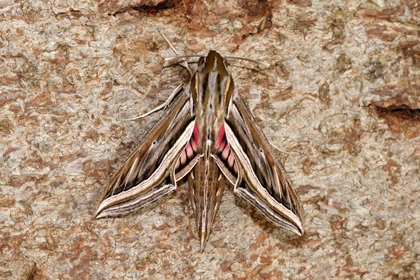Primary Times - the definitive what’s on and where to go family guide of activities and events for children of primary school age. Things to do with your kids during the school holidays including arts and craft activities, music and theatre for children, parties, competitions, days out, and family attractions along with term time drama schools, dance classes, after school clubs and sports activities. Things to do at a place near you!
Ivy lifeline for autumn moths

There’s no need to fill your wardrobes up with mothballs despite an immigration of rare and exciting moths heading for the UK. They’re not interested in your clothes and much prefer something a little tastier, which is why wildlife lovers will be gathered around the ivy over the coming nights as they search for rare and spectacular moths looking for an autumn lifeline. An immigration of rare moths from Europe is currently taking place across the UK with the scarce Silver-striped Hawk-moth and Radford's Flame Shoulder all seen in recent days.
These rarities have also been joined by spectacular immigrant species such as the giant Convolvulus Hawk-moth and Humming-bird Hawk-moth. The Clifden Nonpareil, one of the UK’s most striking autumn moths, has recently been found in Worcestershire for the first time too.
A member of Butterfly Conservation’s West Midlands Branch made the discovery in their moth trap a few weeks ago. Mike Williams from the Branch said: “The Clifden Nonpareil has almost legendary status amongst UK moths and this is the first ever sighting for Worcestershire. This moth was once thought to be a very scarce migrant to the UK, but in recent years the species appears to have become resident in southern counties.”
As part of this year’s Moth Night, an annual UK-wide event to record moths, organisers Atropos, Butterfly Conservation and the Centre for Ecology & Hydrology are asking the public to investigate their local patches of flowering ivy to help gather more information on the plant’s importance to moths.
Ivy provides a lifeline to moths, butterflies and other pollinators as it flowers late in the year when other nectar sources are unavailable. Over the next three nights wildlife lovers are being asked to take a torchlight safari of ivy flowers and count some of the moths that are on the wing in autumn.
Many different autumnal moths are regularly seen refuelling on ivy blossom, including the beautiful Pink-barred Sallow, Angle Shades, Green-brindled Crescent, Yellow-line Quaker and Lunar Underwing.
Migrant species may be attracted too, such as the Silver Y, supping on the sugary nectar that will power their flights southwards to warmer climes. For moths staying and overwintering as adults such as the Buttoned Snout and Red-green Carpet, ivy flowers provide an important food source as the moths build up their fat reserves.
All this insect activity has other benefits too – pollinating the ivy flowers will create the black berries that provide a winter food supply for birds.
Butterfly Conservation Head of Recording, Richard Fox said: “For this year’s Moth Night, find some big patches of ivy flowers nearby and go back with a torch after the sun has set. It’s a fantastic and easy way to see some of the beautiful moths that are on the wing in autumn.”
Atropos editor Mark Tunmore said: “We are encouraging people to get out over the coming days and look at what they can see on their local ivy patches. Some of our most attractive autumnal moths may be glimpsed, taking advantage of this rich nectar source.”
Moth Night 2017 runs from 12 to 14 October and will include moth trapping events across the UK. It is organised by Atropos and Butterfly Conservation in association with the Centre for Ecology & Hydrology, with the aim of encouraging recording and raising the profiles of moths amongst the public.




